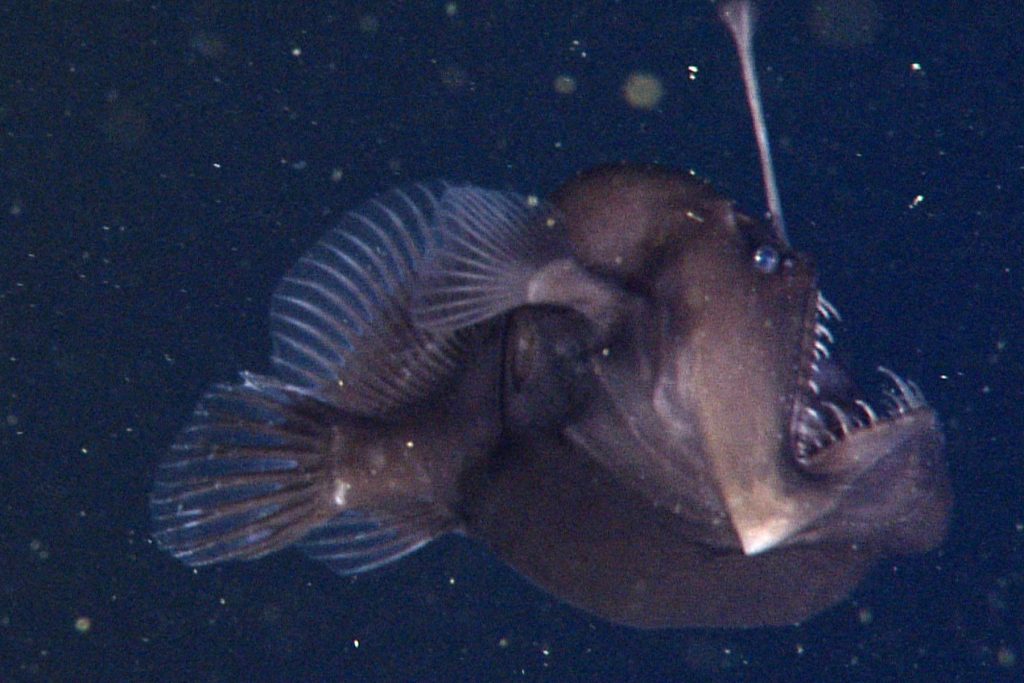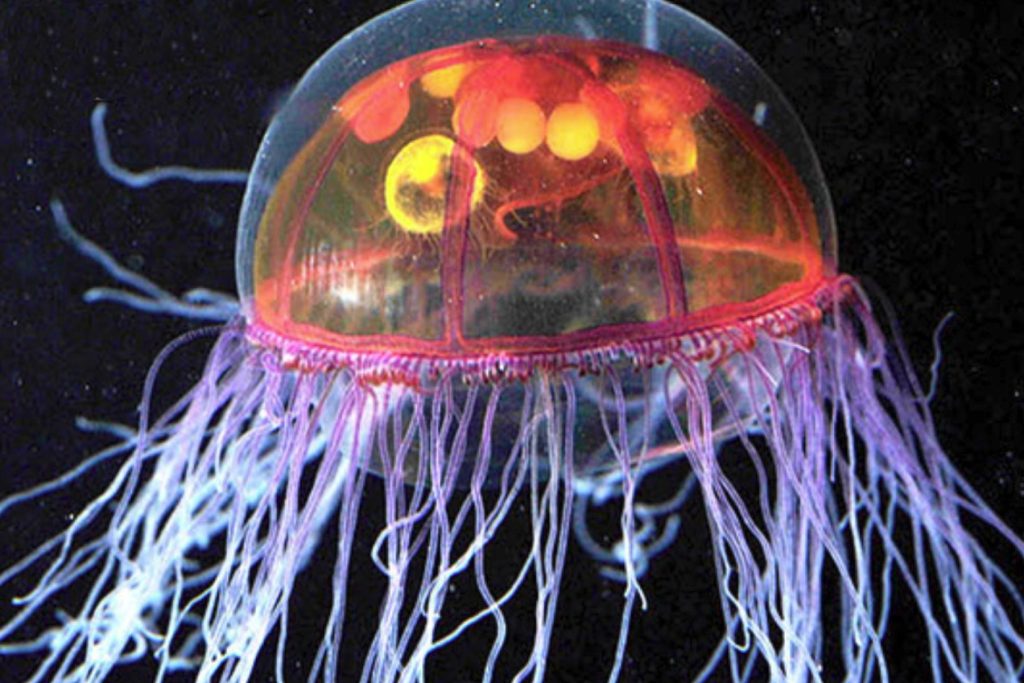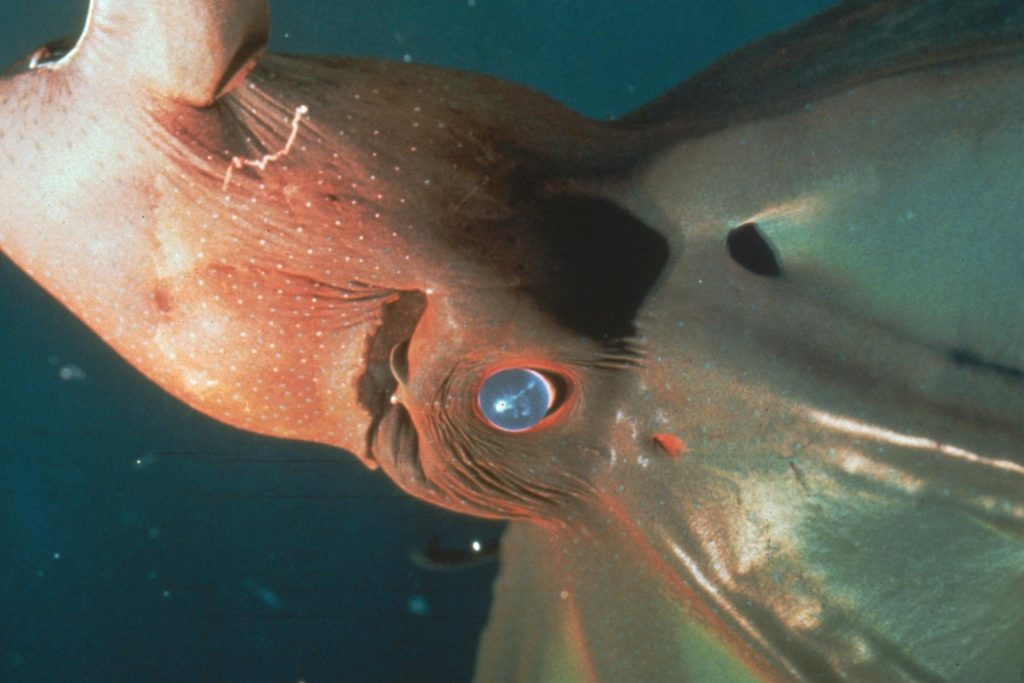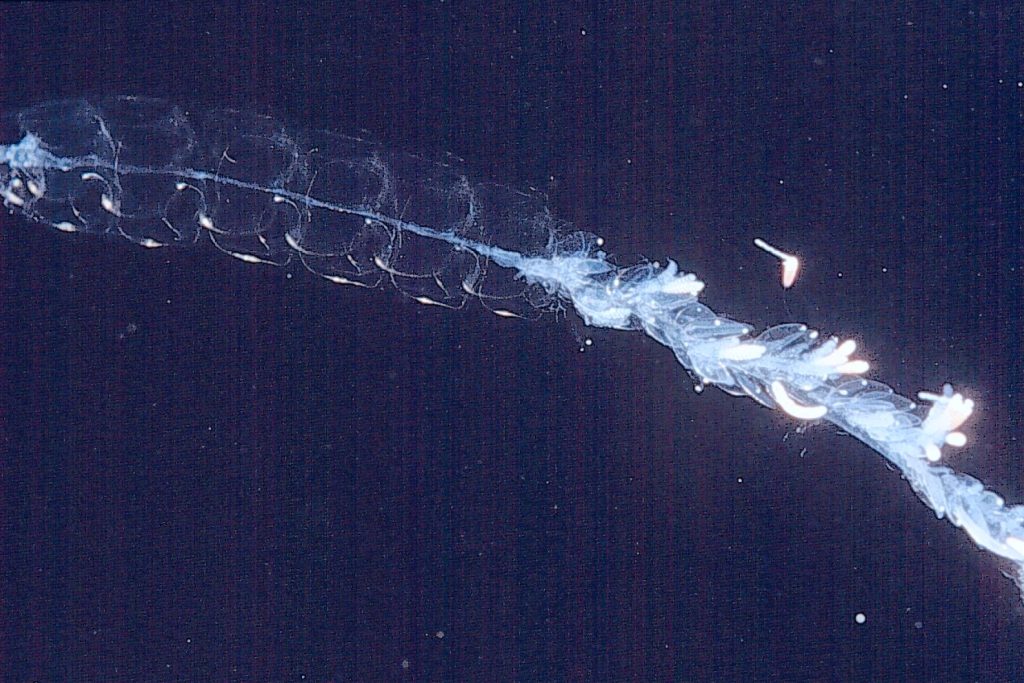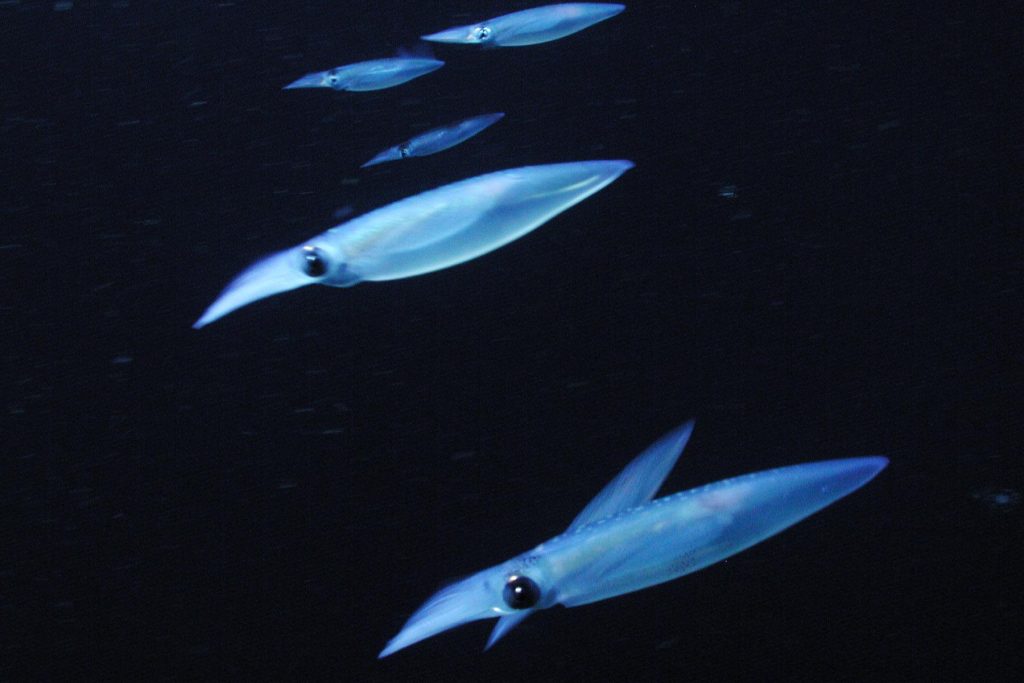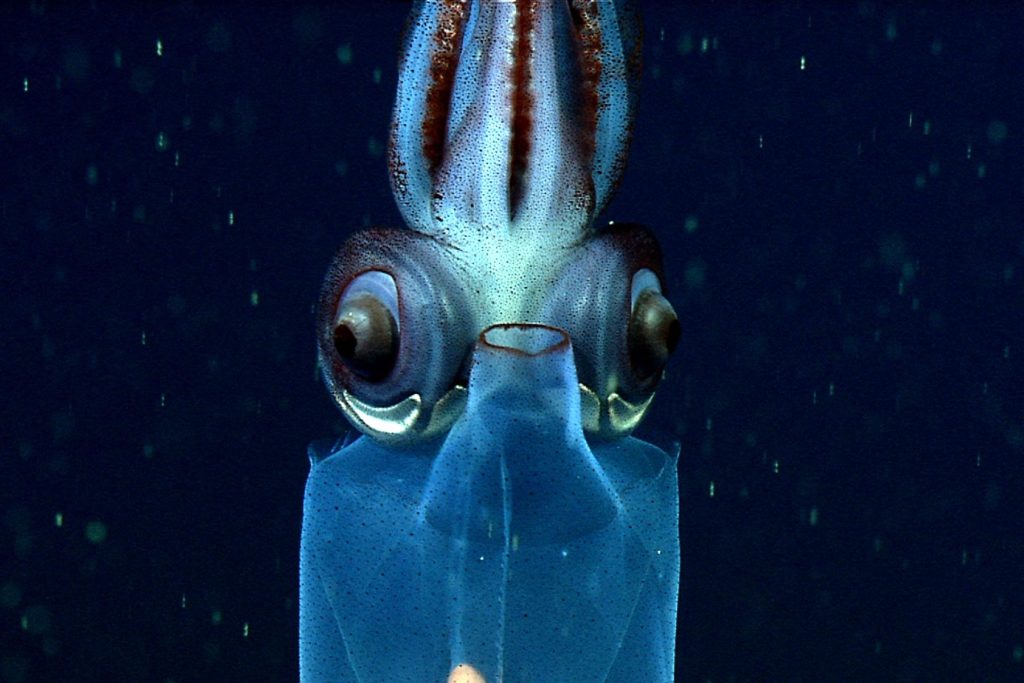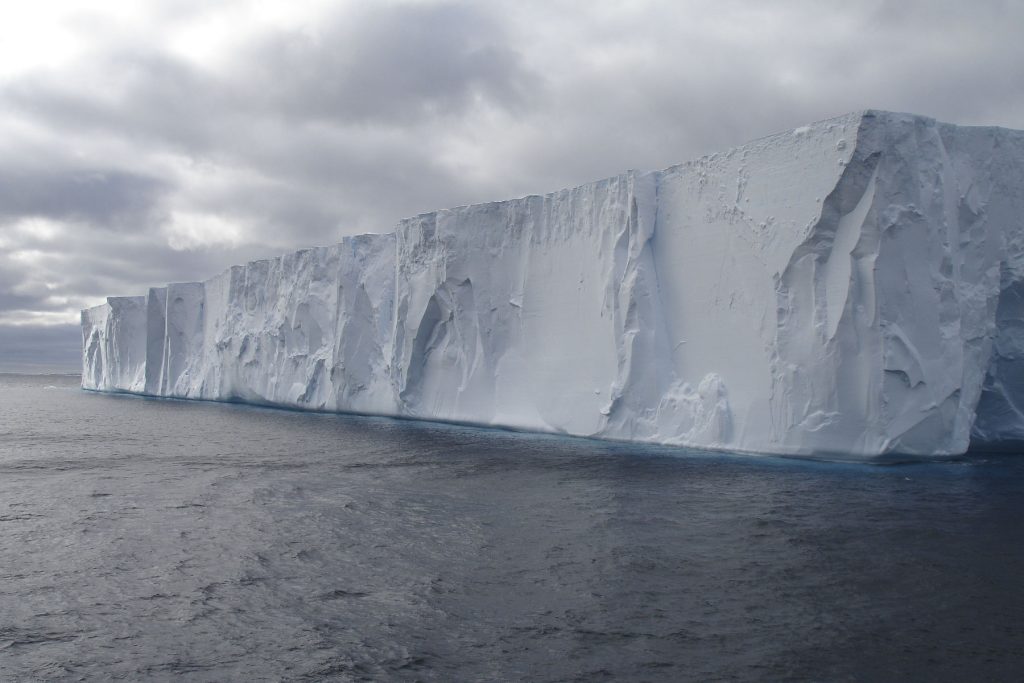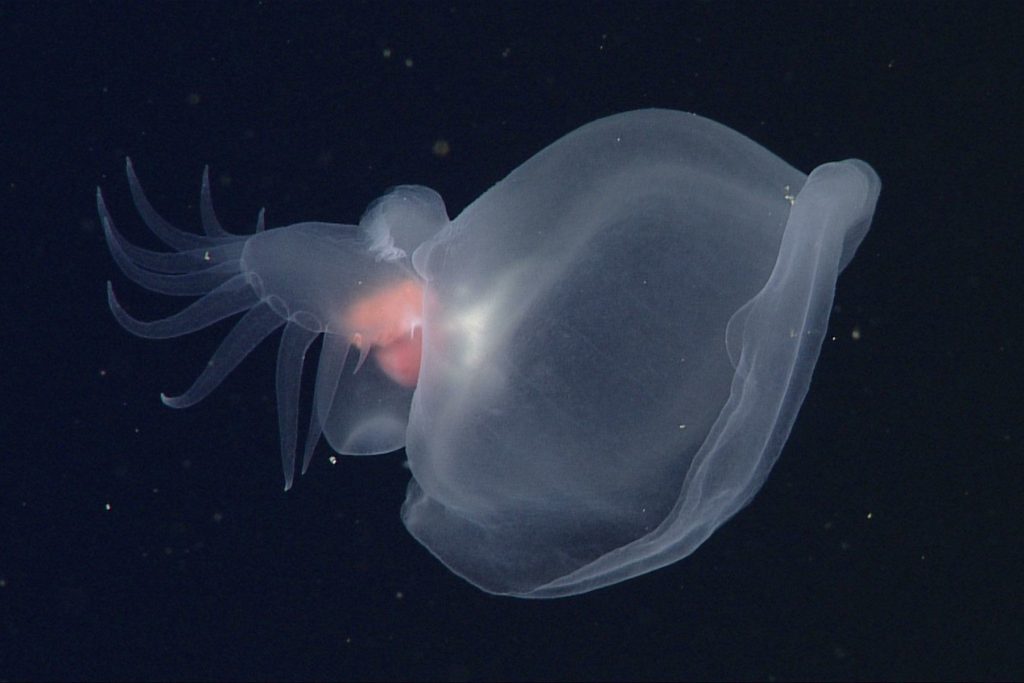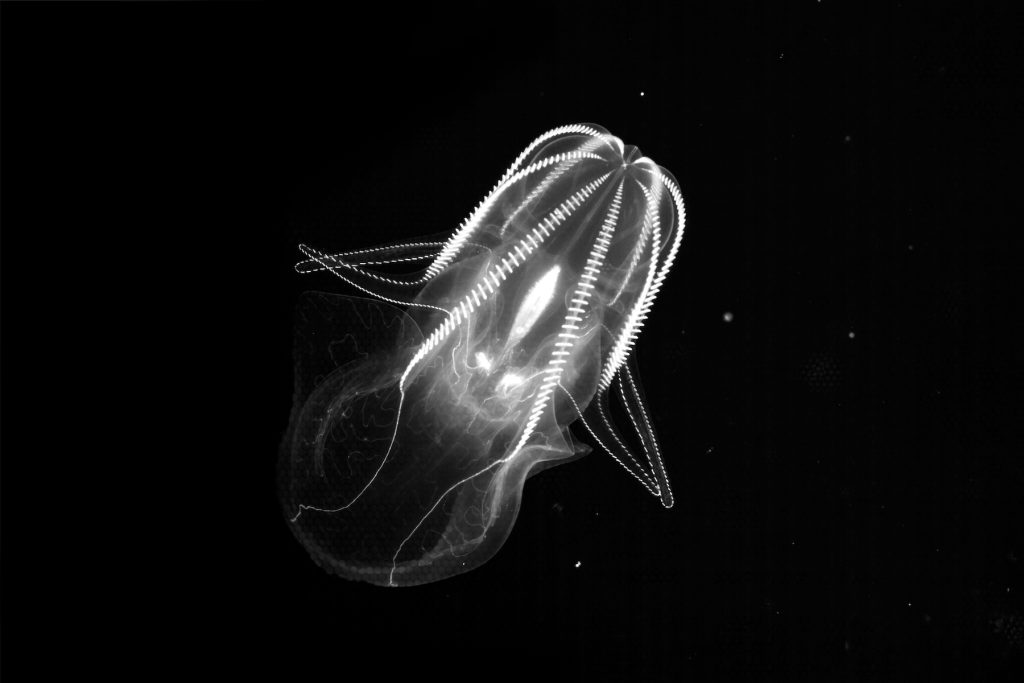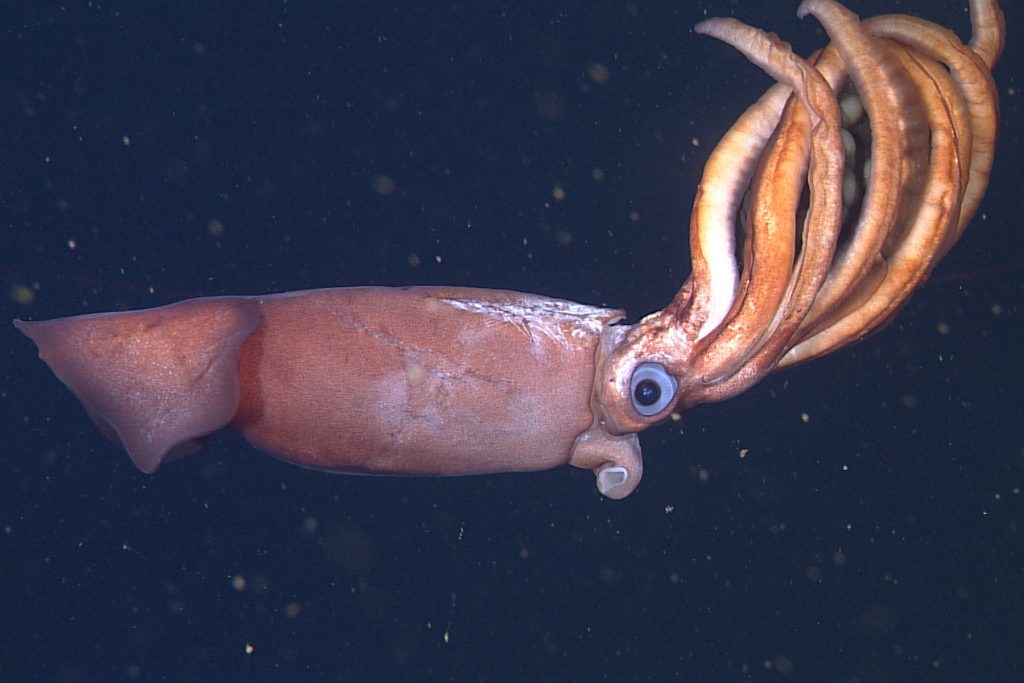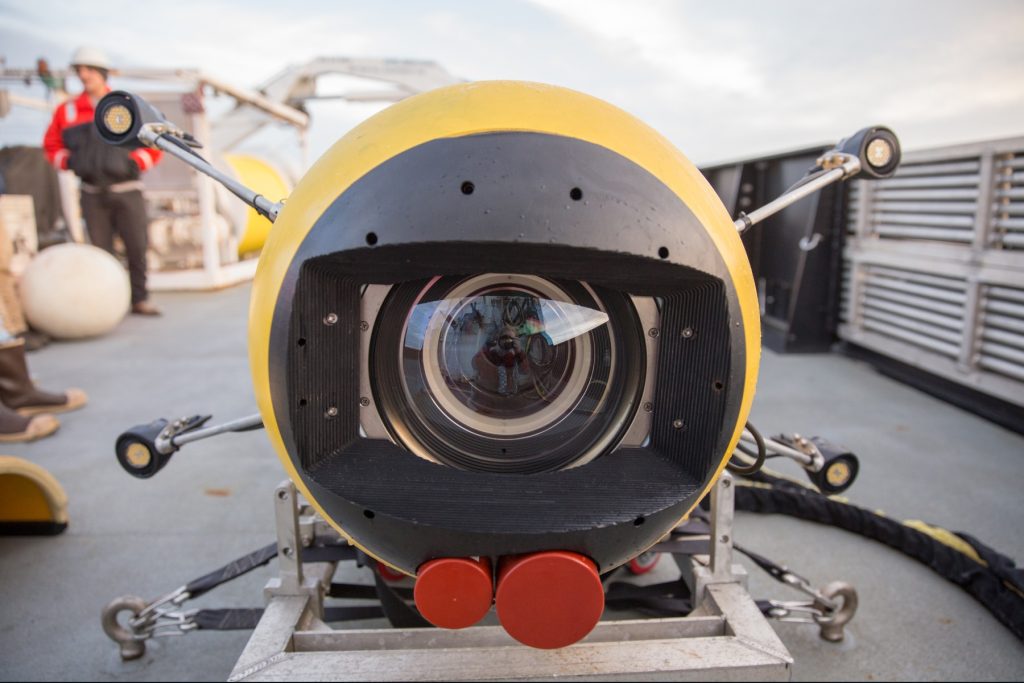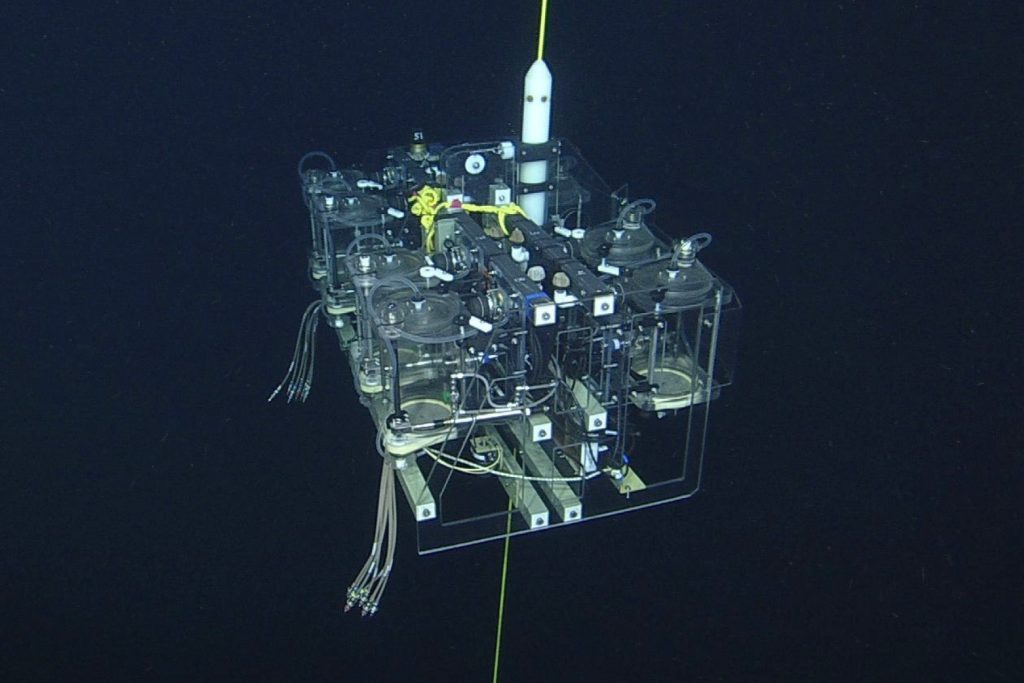The largest living space on Earth lies between the ocean’s sunlit upper layers and the dark floor of the deep sea, on average some 4,000 meters below. This vast midwater habitat is home to our planet’s largest ecosystems and its largest animal communities. Midwater species are adapted to a fluid, three-dimensional world without solid boundaries; and they surely outnumber all other animals on Earth. They comprise essential links in the oceanic food web, providing food for important commercial species like tuna and salmon, as well as for whales, turtles, and giant squid. This is a huge planetary resource, yet we know far less about these species than we do about the constituents of any other major habitat.
For more than a century scientists studied midwater animals indirectly, by towing nets from ships at the surface or by probing the depths with sound. At MBARI, we study midwater animals directly, using undersea vehicles to carry our cameras, instruments, tools and samplers into their deep habitat. This approach, with humans in the real-time control loop, has revolutionized our understanding of midwater ecology and the biology of the animals who live there. These advances are enabled by new technologies; the hardware, software, and methods developed by MBARI engineers, video technicians, and our operations group.
MBARI’s ecological investigations in midwater encompass a wide range of research topics. An overall goal of these efforts is to accurately trace and quantify the passage of organic carbon from primary production at the surface, through the complexities of the midwater community, to the animals that live on the deep seafloor. Among the most striking discoveries of our continuing explorations has been the unexpected profusion and diversity of gelatinous animals. We have documented their diversity, described many new taxa, tracked their ecological niches in the community, and investigated their behavior patterns. The behavior of deep-sea animals has long been a subject of mystery and speculation. Because of the access provided by MBARI’s ROVs, detailed observations of the behavior of midwater animals have become possible for the first time. The value of this new kind of information is that it allows a much better understanding of the complex ecological interactions between species.
A fundamental component of MBARI’s midwater research program is the midwater Time Series project. For about 30 years, remotely operated vehicles (ROVs) and more recently autonomous underwater vehicles (AUVs), with high-resolution video cameras have conducted transects through the upper kilometer of the water column at a single site over Monterey Canyon. The data generated by this project include the identities and abundance of all species encountered, coupled to concurrent measurements of relevant water properties. This is the only data set of its kind in the world and it is immensely valuable by providing a baseline for examining regular seasonal cycling, episodic events like El Niño, and the growing effects of climate change.
Gallery
Projects
Publications
Robison, B.H. and S.H.D. Haddock. 2024. Discovery and description of a remarkable bathypelagic nudibranch, Bathydevius caudactylus, gen. et. sp. nov. Deep Sea Research Part I: Oceanographic Research Papers, 214: 104414. https://doi.org/10.1016/j.dsr.2024.104414
Stenvers, V.I., R.E. Sherlock, K.R. Reisenbichler, and B.H. Robison. 2022. ROV observations reveal infection dynamics of gill parasites in midwater cephalopods. Scientific Reports, 12: 1–12. https://doi.org/10.1038/s41598-022-11844-y
Matsumoto, G.I., L.M. Christianson, B.H. Robison, S.H.D. Haddock, and S.B. Johnson. 2022. Atolla reynoldsi sp. nov. (Cnidaria, Scyphozoa, Coronatae, Atollidae): A new species of coronate Scyphozoan found in the Eastern North Pacific Ocean. Animals, 12: 1–21. https://doi.org/10.3390/ani12060742
Yoerger, D.R., A.F. Govindarajan, J.C. Howland, P.H. Wiebe, M. Curran, J. Fujii, D. Gomez-Ibanez, K. Katija, B.H. Robison, B.W. Hobson, M. Risi, and S.M. Rock. 2021. A hybrid underwater robot for multidisciplinary investigation of the ocean twilight zone. Science Robotics, 6(55): eabe1901. https://doi.org/10.1126/scirobotics.abe1901
Hoving, H. J. T., P. Neitzel, S. Christiansen, R. Kiko, B.H. Robison, P. Silva, and A. Körtzinger. 2020. In situ observations show vertical community structure of pelagic fauna in the eastern tropical North Atlantic off Cape Verde. Scientific Reports, 10: 1–14. https://doi.org/10.1038/s41598-020-78255-9



